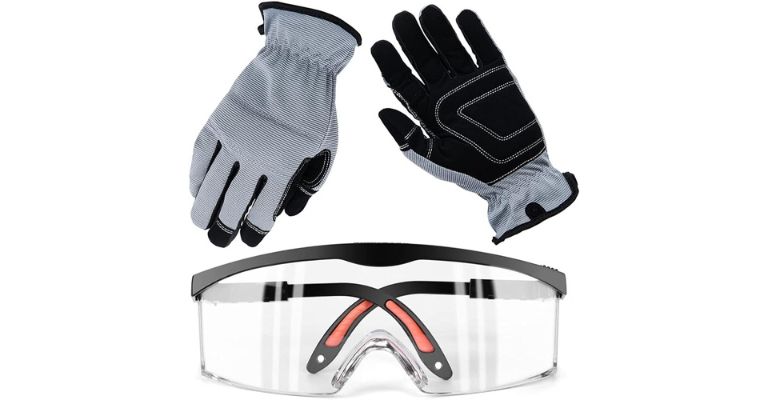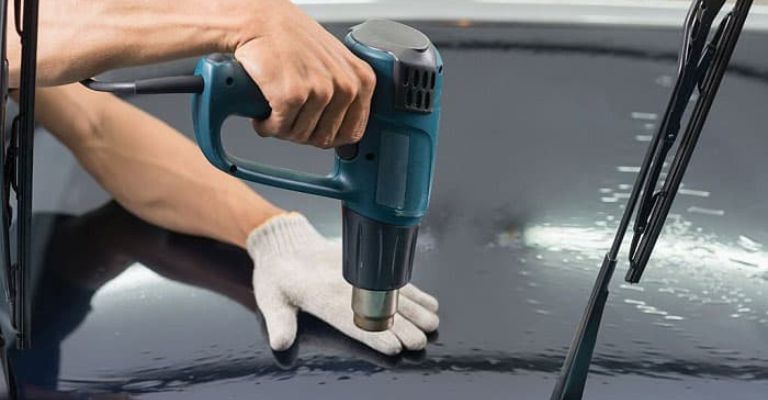Last Updated on September 22, 2023 by Chase Manhattan
If you’re dealing with faded or sun-bleached plastic surfaces on your vehicle, you might have come across various online tutorials suggesting the use of a heat gun to restore plastic. Does it work? Well, the answer is both yes and no.
- How to Clean Car Carpets Quick and Easy - July 10, 2024
- Can You Touch Up Clear Coat? Yes and No (Here’s Why) - November 25, 2023
- How To Wax A Car By Hand: A Comprehensive Guide - November 14, 2023
Restoring plastic with a heat gun can indeed bring back the lost shine and color, making your plastics look almost brand new. But, like everything, this method has its pros and cons. The process involves slowly breaking down the plastic’s molecular composition, allowing the chemical bond to realign as the polymers cool, leaving a glossy surface. However, it’s a delicate process that requires patience and precision, as excessive heat can melt the plastic, damaging its surface and texture. So keep reading so I can tell you what you need to know!
Quick Navigation
Here’s What You Need To Know (Preface for Using a Heat Gun or Deciding Not To)
Before you decide whether to use a heat gun to restore plastic, it’s essential to understand the process, its implications, and the alternatives.
- The Process: The process involves using a heat gun to apply concentrated heat to the faded plastic surface. This heat causes the plastic’s molecular structure to break down and realign, bringing back the rich, deep color.
- Implications: If done correctly, this method can effectively restore the appearance of plastic. However, if not handled properly, it can damage the plastic, making it brittle and prone to cracking.
- Alternatives: There are various alternative methods to restore plastic, such as using plastic restorers, chemical dressings, or even painting over the faded plastic. These methods might be more suitable for those who are not comfortable using a heat gun or for plastics that are heavily damaged by UV radiation.

How To Prepare When Using A Heat Gun To Restore Plastic
Preparation is key when using a heat gun to restore plastic. Here are some steps you should follow:
- Clean the Surface: Start by cleaning the plastic surface thoroughly. Remove any surface dirt, grime, or wax, as these can interfere with the heat treatment process.
- Choose the Right Heat Gun: Not all heat guns are created equal. Some can generate more heat than others, and the amount of heat you need will depend on the type of plastic you are working with.
- Safety Measures: Ensure you have proper safety measures in place. Wear heat-resistant gloves, and work in a well-ventilated area to avoid inhaling any harmful fumes that may be released during the process.
Warnings and Advice To Avoid Damage and Get The Best Results
Using a heat gun to restore plastic is not without risks. Here are some warnings and advice to help you avoid damaging your plastic items and get the best possible results:
- Keep Moving: Never hold the heat gun in one place for too long. Doing so can cause the plastic to melt, leaving a shiny, discolored spot.
- Distance Matters: Maintain a distance of about 4-6 inches between the heat gun and the plastic surface. Too close, and you risk melting the plastic; too far, and the heat may not be effective.
- Patience is Key: Take your time with the process. Heat guns are powerful tools, and rushing can lead to mistakes.
- Test First: Always test the heat gun on a small, inconspicuous area first to ensure it won’t damage the plastic.
- Avoid Flammable Areas: Be especially careful when working near flammable materials, such as gas caps on vehicles.

Step-By-Step Guide For Using A Heat Gun To Restore Plastic
Here’s a step-by-step guide on how to use a heat gun to restore plastic:
- Clean the Plastic Surface: Start by cleaning the plastic surface thoroughly using a mild detergent and warm water. Make sure to remove any surface dirt, grime, or wax.
- Prepare Your Heat Gun: Plug in your heat gun and set it to a medium heat setting. Allow it to warm up for a few minutes.
- Apply Heat: Hold the heat gun about 4-6 inches away from the plastic surface and move it in a slow, circular motion. Keep the heat gun moving at all times to prevent melting the plastic.
- Observe the Changes: Pay close attention to the changes in the plastic’s appearance. You should see the color starting to deepen. If you notice any shiny spots, it means you’re applying too much heat. Move the heat gun away and allow the plastic to cool down before continuing.
- Let it Cool: After you’ve finished treating the entire area, let the plastic cool down completely.
- Apply a Plastic Restorer (Optional): For added protection and shine, you can apply a plastic restorer to the treated surface. This step is optional but recommended for outdoor plastics that are exposed to the elements.
How To Finish Up The Process
Finishing up the process involves sealing the restored plastic with a good quality plastic restorer or protectant. This step is crucial as it seals the plastic, protecting it from UV rays, dirt, and grime, and prolongs the results of your restoration efforts.
When applying a plastic restorer, ensure that the plastic surface is completely cool and dry. Apply the restorer liberally to the surface and buff it in using a microfiber cloth. Let it dry completely before exposing the plastic to the elements.
Should You Use Any Aftercare Products?
Yes, using aftercare products can significantly prolong the results of your plastic restoration efforts. A good quality plastic restorer or protectant can shield your plastic from harmful UV rays, preventing further fading.
Some of the highly recommended products include Meguiar’s Ultimate Black Plastic Restorer and Solution Finish Black Trim Restorer. These products are easy to apply and can provide long-lasting protection to your plastic surfaces.
Recap of Tips and Tricks
Restoring plastic with a heat gun is an effective method if done right. Here’s a recap of some of the tips and tricks to get the best results:
- Always clean the plastic surface before starting the heat treatment.
- Choose the right heat gun for the job.
- Maintain a safe distance between the heat gun and the plastic surface.
- Keep the heat gun moving at all times.
- Be patient and take your time.
- Test the heat gun on a small, inconspicuous area first.
- Apply a plastic restorer or protectant after the heat treatment to prolong the results.
Ending Thoughts
While using a heat gun to restore plastic can indeed deliver impressive results, it’s not a permanent solution. Over time, the plastic will start to fade again, especially if it’s exposed to harsh weather conditions and UV rays.
However, with proper care and maintenance, including regular application of a good quality plastic restorer or protectant, you can prolong the results and keep your plastics looking great for longer.
FAQs
Is it safe to use a heat gun to restore plastic?
Yes, but you need to be careful. Heat guns generate intense heat that can melt plastic if not used correctly. Always keep the heat gun moving and maintain a safe distance from the surface.
How long does the effect of restoring plastic with a heat gun last?
The results can last several months to a year, depending on the type of plastic and its exposure to the elements. Using a plastic restorer or protectant can significantly prolong the results.
Can I use a hairdryer instead of a heat gun?
No, a hairdryer does not generate enough focused heat required for this process. A dedicated heat gun is needed to restore faded plastic effectively.
Can I use the heat gun method on colored plastics?
Yes, you can use a heat gun to restore colored plastics. However, the results may vary depending on the color and type of plastic.
What are some alternatives to using a heat gun to restore plastic?
Some alternatives include using plastic restorers, chemical dressings, or even painting over the faded plastic. These methods can be more suitable for those who are not comfortable using a heat gun or for plastics that are heavily damaged by UV radiation.

